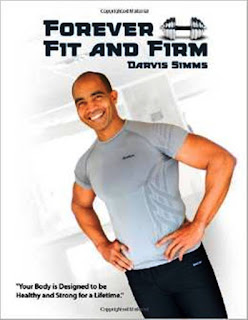For decades, the mantra for
healthy eating has been “eat a low-fat, low-cholesterol diet.” Touted as
a way to lose weight and prevent
heart disease
and other chronic conditions, millions of people have followed this
advice. Seeing a tremendous marketing opportunity, food companies
re-engineered thousands of foods to be low-fat or fat-free. The low-fat
approach to eating may have made a difference for the occasional
individual, but as a nation, it has nether helped us control our weight
nor become healthier. In the 1960s, fats and oils supplied Americans
with about 45 percent of their calories. About 13 percent of the
population was obese and less than one percent had type 2 diabetes.
Today, Americans take in less fat, getting about 33 percent of calories
from fats and oils; yet 34 percent of the population is obese, and eight
percent has diabetes (mostly type 2). (Source: Harvard School of Public
Health).
Research has shown that the total amount of fat in your
diet isn’t linked with weight or disease. What actually matters is the
type of fat in your diet. Trans fats and saturated fats increase your
risk of cardiovascular disease, while monounsaturated and
polyunsaturated fats do just the opposite. But then you ask, “what about
cholesterol in food?” The answer is, for most people the mix of fats in
their diets influences cholesterol in their bloodstreams far more than
cholesterol in food.
Almost all foods contain some fat. Even
foods like carrots and lettuce contain small amounts of fat. That’s a
testament to how important fats are for your health and well-being. Fat
provides a terrific source of energy for your body as well as a great
depot for storing it. It is an important part of cell membranes, helping
govern what gets into and out of your cells. Your body uses cholesterol
as the starting point to make estrogen, testosterone, vitamin D, and
other vital compounds. Fats are also biologically active molecules that
can influence how your muscles respond to insulin. Also, different types
of fats can fire-up or cool down inflammation in your body.
Your
body packages fat and cholesterol into tiny protein-covered particles
called lipoproteins in order to get them into your blood stream. Some of
these lipoproteins are big and fluffy, and others are small and dense.
However, the most important ones to remember for your health and
well-being are low-density lipoproteins, high-density lipoproteins, and
triglycerides as explained below.
Low-density lipoproteins (LDL)
carry cholesterol from your liver to the rest of your body. Your cells
latch onto these particles and extract fat and cholesterol from them.
When there is too much
LDL cholesterol
in your blood, these particles can form deposits in the walls of your
coronary arteries and other arteries throughout your body. These
deposits, called plaque can cause your arteries to narrow and limit
blood flow, resulting in a heart attack or stroke. Thus, LDL cholesterol
is called your bad cholesterol.
High-density lipoproteins (HDL)
scavenge cholesterol from your bloodstream, your LDL, and your artery
walls and ferry it back to your liver for disposal. Thus, HDL
cholesterol is referred to as your good cholesterol.
Triglycerides
comprise most of the fat that you eat and that travels through your
bloodstream. Because triglycerides are your body’s main vehicle for
transporting fats to your cells, they are essential for good health.
However, an excess of triglycerides can be unhealthy.
The type of
fat in your diet determines to a large extent the amount of total and
LDL cholesterol in your bloodstream. Cholesterol in food matters too,
but not nearly as much. You can basically break the fats in your diet
into three categories; good, bad, and very bad.
Good FatsUnsaturated
fats are called good fats because they can improve blood cholesterol
levels, ease inflammation, stabilize heart rhythms, and play a number of
other beneficial roles.
Unsaturated fats are predominantly found in
foods derived from plants, such as vegetable oils, nuts, and seeds. They
are liquid at room temperature.
Furthermore, there are two types of unsaturated fats: monounsaturated and polyunsaturated.
Monounsaturated fats
are found in high concentrations in canola, peanut, and olive oil, in
avocados, nuts like almonds, hazelnuts, and pecans, and seeds such as
pumpkin and sesame. Polyunsaturated fats are found in high
concentrations in sunflower, corn, soybean and flaxseed oil. They also
are found in foods such as walnuts, flaxseeds and fish.
Research
has shown that replacing carbohydrates in your diet with good fats
reduces harmful levels of LDL and increases protective HDL in your
bloodstream. A randomized trial called the Optimal Macronutrient Intake
Trial for Heart Health showed that replacing a carbohydrate-rich diet
with one rich in unsaturated fat - predominantly monounsaturated fats -
lowers blood pressure, improves lipid levels, and reduces the estimated
cardiovascular risk.
Bad FatsSaturated
fats are called bad fats because they increase your total cholesterol
level by elevating harmful LDL. Your body can produce all the
saturated fat
that it needs, so you don’t have to get any from your diet. In the US
and other developed countries, saturated fats come mainly from meat,
seafood, poultry with skin, and whole-milk dairy products. A few plant
sources, such as coconuts and
coconut oil, palm oil and
palm kernel oil, also are high in saturated fats.
As
general rule it’s good to keep your intake of saturated fats as low as
possible. Saturated fats are found in many foods, including vegetable
oils that are mainly unsaturated fats, so you can’t completely eliminate
them from your diet. Because red meat and dairy fat are the main
sources of saturated fats for most people, minimizing them in your diet
is the primary way to reduce your intake of saturated fat.
Very Bad FatsTrans
fatty acids, more commonly known as trans fats, are made by heating
liquid vegetable oils in the presence of hydrogen gas, - a process
called
hydrogenation.
Partially hydrogenating vegetable oils makes them more stable and less
likely to spoil. It also converts the oil into a solid which makes
transportation easier. Partially hydrogenated oils can also withstand
repeated heating without breaking down, making them ideal for frying
fast foods. This is reason partially hydrogenated oils have been a
mainstay in restaurants and the food industry.
Trans fats are
worse for cholesterol levels than saturated fats because they raise bad
LDL and lower good HDL. They also increase inflammation, an
over-activity of the immune system that is associated with heart
disease, stroke, diabetes, and other chronic conditions. Even small
amounts of trans fats in your diet can have harmful health effects. For
every extra two percent of daily calories from
trans fat
(the amount in a medium order of fast food French fries) the risk of
coronary heart disease increases by 23 percent. It is estimated that
eliminating trans fats from the US food supply would prevent between six
and 19 percent of heart attacks and heart attack-related deaths (more
than 200,000) each year.
Recommendations for Fat in Your DietAre
you confused at this point about the type of fats and their varied
effects on your health? If so remember the basic message to replace the
bad fats in your diet with the good fats. Here are some suggestions to
help you limit the bad fats in your diet.
- Eliminate trans
fats from partially hydrogenated oils. Check food labels for the
presence of trans fats and avoid fried fast foods.
- Limit
your intake of saturated fats by cutting back on red meat and full-fat
dairy products. When possible replace red meat with poultry, fish,
beans, and nuts. Also, try switching from whole milk and other full-fat
dairy foods to lower-fat versions.
- Use liquid vegetable oils rich in polyunsaturated and monounsaturated fats in place of butter in your cooking and at the table.
- Eat
one or more sources of omega-3 fats every day. Excellent sources are
fish, walnuts, canola or soybean oil, ground flax seeds and flax seed oil.
If you like this post, please checkout my fitness publications at: Forever Fit and Firm






